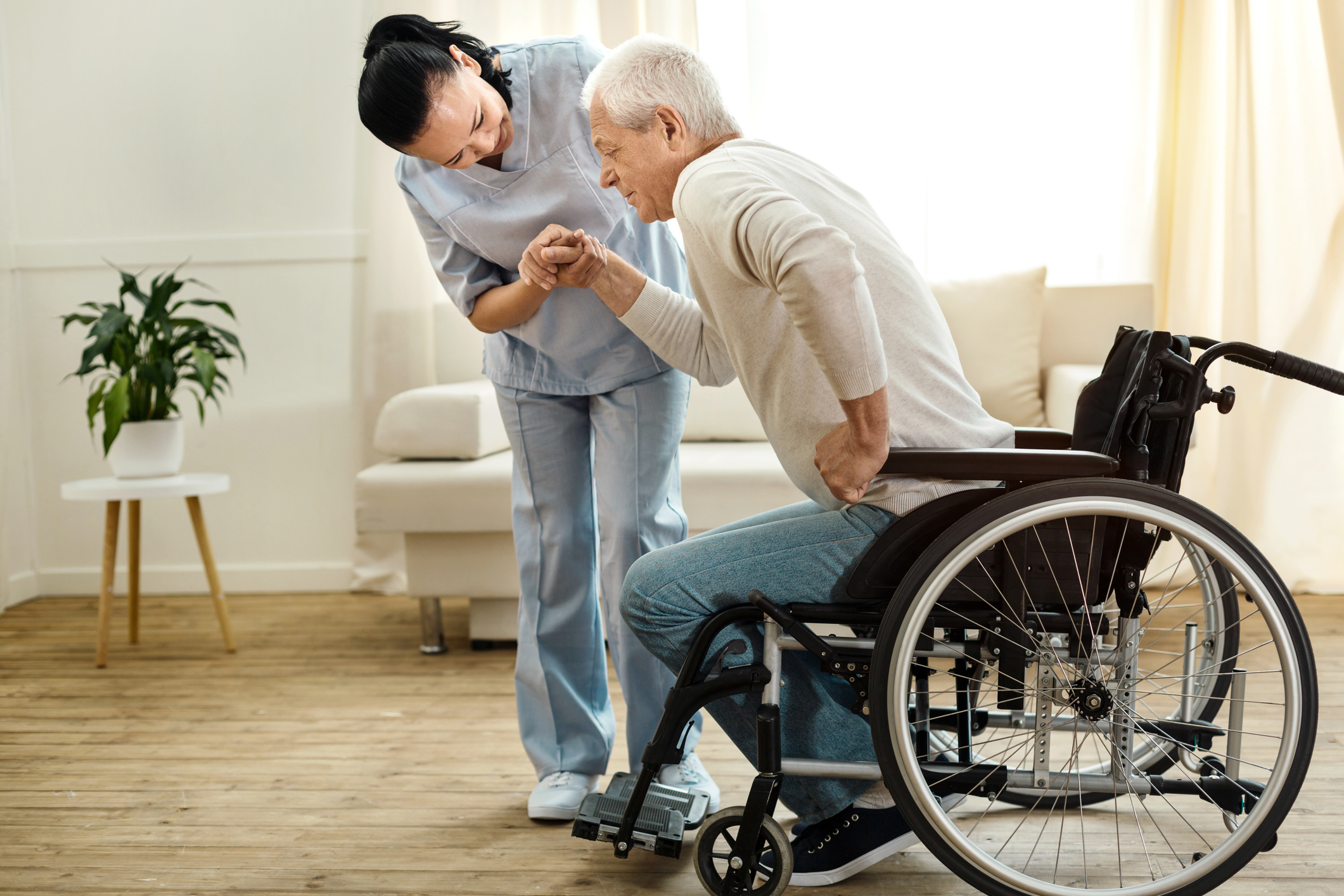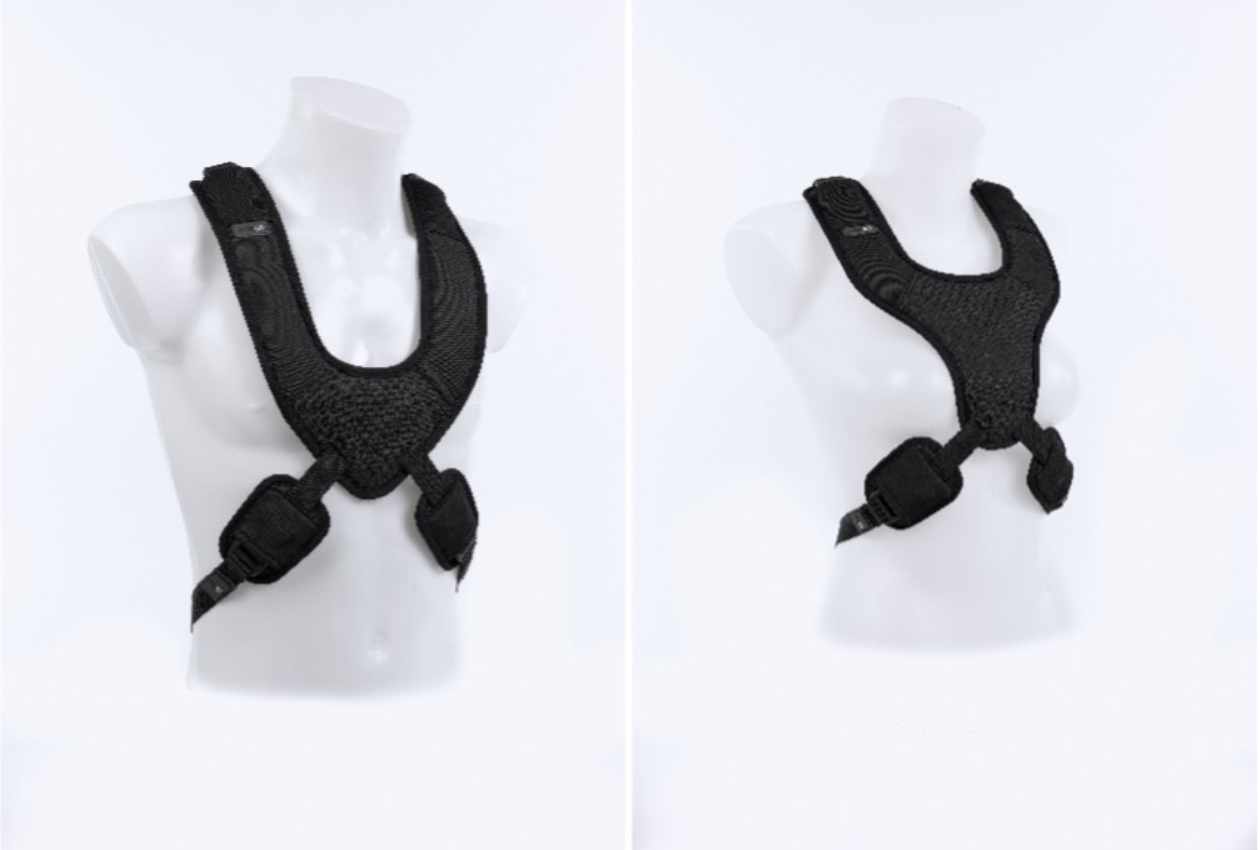Categories
Speciality Areas
What makes a good trunk support? Part 2: dynamism

How we position, move, and support our upper body is critical for good health and optimal functionality. But what is involved in positioning and movement?
The adjective ‘dynamic’ is applied widely across wheelchair and seating components, but how does this term apply to the occupant of a wheelchair?
From the occupant’s point of view, the dynamic element of a seating element, or postural support device, facilitates the occupant’s ability to carry out everyday activities from their chair. Sitting is an activity, and postures will change during the day to accommodate for fatigue, functional activities, changes in tone, etc. Functional movements during wheelchair use, such as head and upper extremity movements, are most effectively executed when multiple proximal and distal body segments are involved: so we need to be able to vary our posture to achieve our required outcomes. To this end, we might wish our seating system to allow movement within defined locations and zones of control. In other cases, we may wish our support devices to help us to regain a starting position after movement has occurred. These dynamic postural alteration properties are of particular importance around the trunk since it is this part of the body which will facilitate or impede the greatest number of our seated activities. To understand the pros and cons of these different ‘dynamic’ situations allowing postural variation, this article has coined some terms to help differentiate the different aspects.
Importantly, safety has to be a primary concern. Not all movement is good. There are instances where a desired postural adjustment is both protected and facilitated by restricting the movement of other parts of the body. Indeed, by not permitting restricting certain movements, the outcome can be very dangerous and even life- threatening.
Safety – Placement of supports
In different parts of the world, deaths from strangulation by anterior harnesses have been recorded. Strangulation can arise because the support is too high and it occludes the airway: this can be because the support has been fitted too high, or the support has been adjusted since fitting and consequently sits too high, or the support has moved out of position since being fitted. The risk of injury or death due to strangulation is greater when a chest support is used, as compared with a shoulder harness, due to the neck shape integral to the design of the support. To remind users of this risk, a label has been recommended (Figure 1) in the recently published ISO/TS 16840-151:

Alternatively, the risk of strangulation can arise because of the misapplication of other postural support devices. An anterior trunk support should never be used without a properly positioned and adjusted pelvic positioning belt (again see ISO/TS 16840-151). The occupant might be able to slip down in their seat if their pelvic positioning belt is absent or not in use, fixed too loosely, poorly positioned, or malfunctioning.
The risk of injury or death is increased when the occupant is unable to recognise that something is incorrect about their seating or cannot verbally communicate their distress.
Safety – Dynamic materials
Another risk comes from mechanical compression to the ribcage or diaphragm due to the anterior support being fitted too tightly, or the occupant sliding underneath the postural support until stopped by their arms and ribcage, placing pressure on the ribcage. A degree of elasticity in the support materials will allow movement of the diaphragm and thus not interfere with respiratory movements of the thorax. Harnesses incorporating such materials are what we might call reactive dynamic devices. However, it is important as to where the reactive elasticity is positioned and directed.

‘Butterfly’ harnesses made from elastic materials like Lycra have been found not to meet the ISO 16840-32 performance standard. They have been found to rise up with the chest movements, and reports of strangulation have resulted. This risk has been removed in alternative chest harness designs such as the Stayflex (Figure 2), where the materials and stitching allow only vertical stretch of the straps over the shoulders, and only lateral stretch in the webbing attaching the lower part of the harness, but no stretch in the central zone. An alternative can be found in the Posigo FLO2 (Figure 3) where the lower straps have the elasticity to allow the diaphragm full movement. (Both models have solutions for male vs female torsos.)

Permissive Dynamism
Depending on the core strength of the trunk, the occupant may be able to move away from their centrally balanced position, but only a limited distance for specific body segments before the effects of gravity become stronger than the individual’s ability to recover their original position. In this case the occupant might desire a permissive dynamic support which allows postural adaptation, but only to the distance where the ability to recover to an original position can be achieved. The degree of tightening and the elasticity of the upper straps of an anterior harness might be one way of achieving this.
Responsive Dynamism
A permissive dynamic support may help to keep the torso within a range of movement. As the occupant tires they may need increased assistance in regaining their ‘neutral’ position. Elasticity within the device or spring mounts attached, i.e. a responsive dynamic support, can help here, but may need individual selection to match that particular user’s needs. An obvious candidate is an anterior harness where the elasticity in the upper straps helps the occupant back into their posterior support.
An innovative approach is the EPiC seating system, where the back support is mounted with spring-loaded hinges which can be set up to allow the occupant to push back into a more reclined position, and then assists them to return into a more upright position as desired (Figure 4). Another product in this category was the Hip Grip (now discontinued), where a support around the pelvis allowed the occupant to move their pelvis towards a more anterior pelvic tilt, while rubber springs in the device helped the individual to regain their original posture. The success of both these latter products was that they were designed to articulate around the body’s natural pivot point of the hip joint (traditional back support recline mechanisms rotate at the junction of the back support mounts and the seat base, which is quite some distance below the position of the hip joint!). For the EPiC, this provides the additional benefits of no shearing along the person’s back during the recline. Importantly, any lateral, anterior, or head supports remain in place relative to their alignment with the occupant’s body.
Another family of dynamic systems are those which are designed to absorb the energy dissipated into the seating and chair components from high tone occupants. These are usually spring-loaded to return the component to its original position. This may apply to a single component, as seen in the likes of the Stealth’s Tone Deflector (Figure 5), or Symmetric Designs’ Dynamic + addition to their Twin Headrest Hardware (Figure 6). Alternatively, this may apply to multiple components which allow the back support-seat and the seat-leg support angles to open up as the occupant extends, and then springs bring the elements back into their original position as the occupant relaxes.

There are also absorptive support materials which may aid in absorbing the energies of the fatiguing vibrations experienced when propelling a chair over uneven ground. Research has shown, for example, that air-foam cushioning in the seat cushion and back supports absorbs vibrations better than solely air or gel cushioning.

Active dynamism
The most active dynamic system is one that reacts to sensors which detect the position of the body and then applies energy to the system to adjust the person’s posture. This can be a response to an elevated pressure being in place for longer than the system’s algorithms indicate that it is safe, and air cells, for example, are respectively deflated and inflated so that the pressures are redistributed elsewhere. There are other active dynamic systems which sense that the body’s mass has moved offline (maybe as a consequence of fatigue), and actuators come into play which push against parts of the torso or seat to bring the occupant’s body back into line.

Conclusion
There’s a range of concepts of ‘dynamic’ within upper body management in a seating system: each is important in its own right. Depending on the client’s need the dynamic element may be Reactive, Permissive, Responsive, Absorptive, or Active – or a combination of one or more of these. They each have impacts on a person’s postural variation, and to different degrees. Part of the specialist’s seating assessment is to ascertain what the client wants to achieve through their day-to-day activities, and which dynamic aids will facilitate this postural variation to meet these requirements, thereby enabling seating as an activity.
References
- BS ISO/TS 16840-15:2024 Wheelchair seating — Part 15: Selection, placement and fixation of flexible postural support devices in seating
- BS ISO 16840-3:2022 Wheelchair Seating – Part 3: Determination of static, impact, and repetitive load strengths for postural support devices